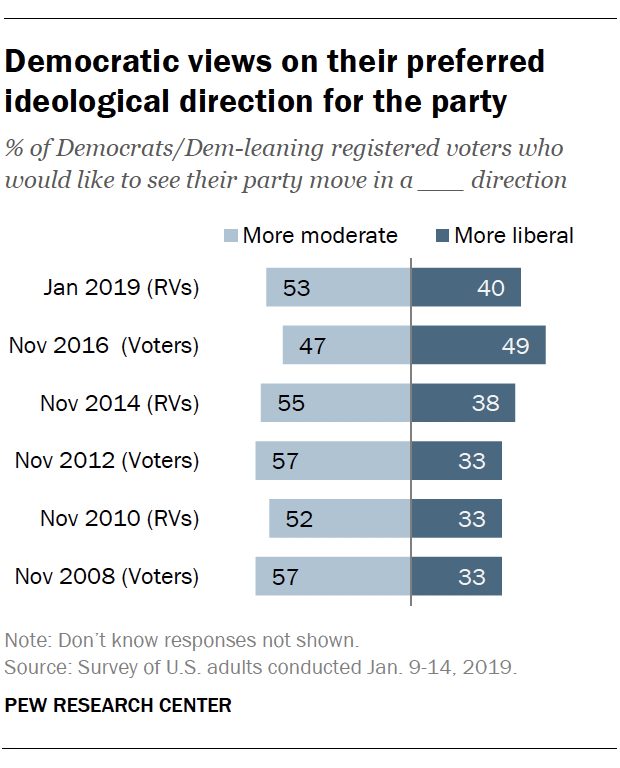Biden’s Super Tuesday Victory Proves That the Democratic Party Is Actually Two Parties
Photo by Win McNamee/Getty
The party represented by Biden is clearly bigger in the voting booth. Progressives have won major policy victories in the party—as Joe Biden has put forth a platform he would vote against every year of his career before 2016—but that does not automatically translate to electoral victory. Progressives need to come to terms with the fact that the other large coalition in the party does not care about policy as much as we do, and we need to figure out how to communicate our vision in ways that can appeal to a broader coalition. If ideological victories automatically translated to votes, then these figures below would mean that Tuesday was an utterly dominant victory for Bernie Sanders.
A government plan for all instead of private insurance,
Support/Oppose:
VT: 73%/23%
ME: 69%/28%
TX: 63%/33%
MN: 62%/35%
CO: 57%/36%
CA: 57%/36%
NC: 55%/41%
OK: 53%/43%
TN: 52%/44%
AL: 51%/43%
VA: 52%/45%
MA: 50%/45%@CNN Exit Pollshttps://t.co/sjyDdhHNMahttps://t.co/Xm0GheJTNj— Political Polls (@Politics_Polls) March 4, 2020
Democratic voters just want to beat Trump. It’s really that simple. This election isn’t a referendum on progressivism as much as it is about listening to Democratic leaders as to who is best positioned to win in November. If voters were absolutely certain that Sanders’s progressivism could not win, the consolidation around Biden would have happened much sooner and without the last-minute aid from establishment politicians. The Obama-led consolidation just before Tuesday wasn’t some nefarious scheme or “coup” as one extremely unhelpful Sanders surrogate tweeted then deleted, but the right side of the Democratic Party doing the smart thing and coalescing around their own interests. That’s politics. The progressives did not unify in response, and as Sanders demonstrated before Pete Buttigieg and Amy Klobuchar dropped out to endorse Biden after South Carolina, a unified front is an incredibly effective weapon against a fractured field.
On Super Tuesday the 18-29-year olds who vote for Bernie Sanders at Saddam Hussein-levels did not turn out to vote in the numbers needed to change politics the way that progressives aim to. Again. This is a perpetual tragedy of American politics regardless of the generation, and if you are smugly treating this as a victory lap instead of an ongoing decades-long crisis for democracy, then you are part of this very complex problem. Seriously bringing young people into any political coalition is all talk until we can build a system where voting is no longer a task best suited to those with an abundance of time and comfort.
The last voter at Texas Southern University has walked out of the voting booth. It took Hervis Rogers nearly 7 hours to vote tonight. #supertuesday2020pic.twitter.com/kEQ0HgPZHg
— ed lavandera (@edlavaCNN) March 4, 2020
But the 30+-year-olds did show up to vote. This is where we get to the tangible part of Bernie’s wing of the party. Historically speaking, people tend to vote at normal rates when they get into their 30s, and that is why you saw so many TV newscasters aghast at Bernie’s big victory in Nevada. Times have changed, and the children of the largest generation ever are now voting at similar rates as the (previously) largest generation in U.S. history. The progressive wing of the party is growing, while father time ensures that moderate wing of the party is shrinking.
California Exit Polls By Age:
18-29:
Sanders 72%
Warren 14%
Biden 5%
Bloomberg 1%30-44:
Sanders 57%
Warren 21%
Biden 9%
Bloomberg 6%
